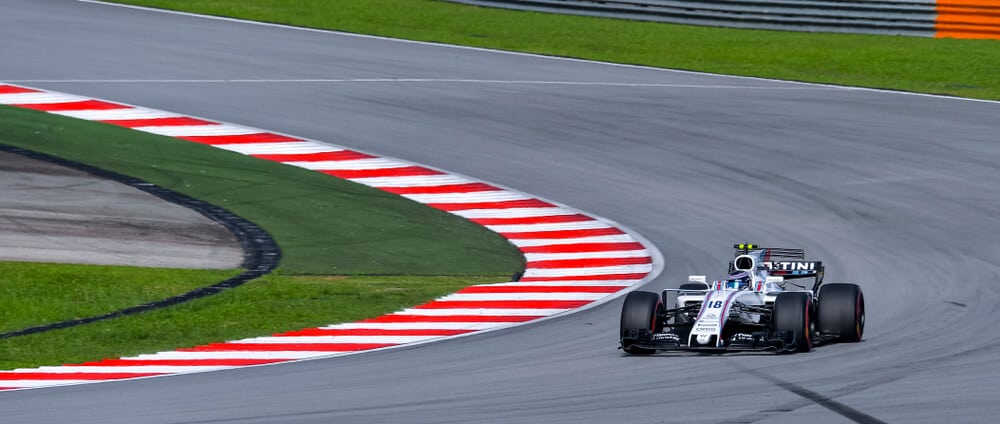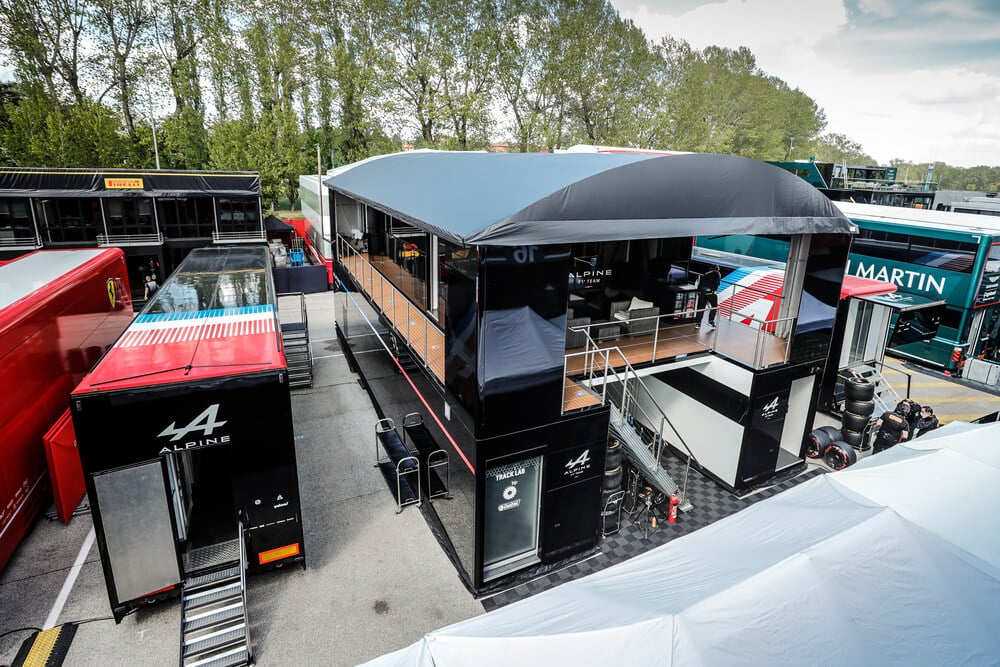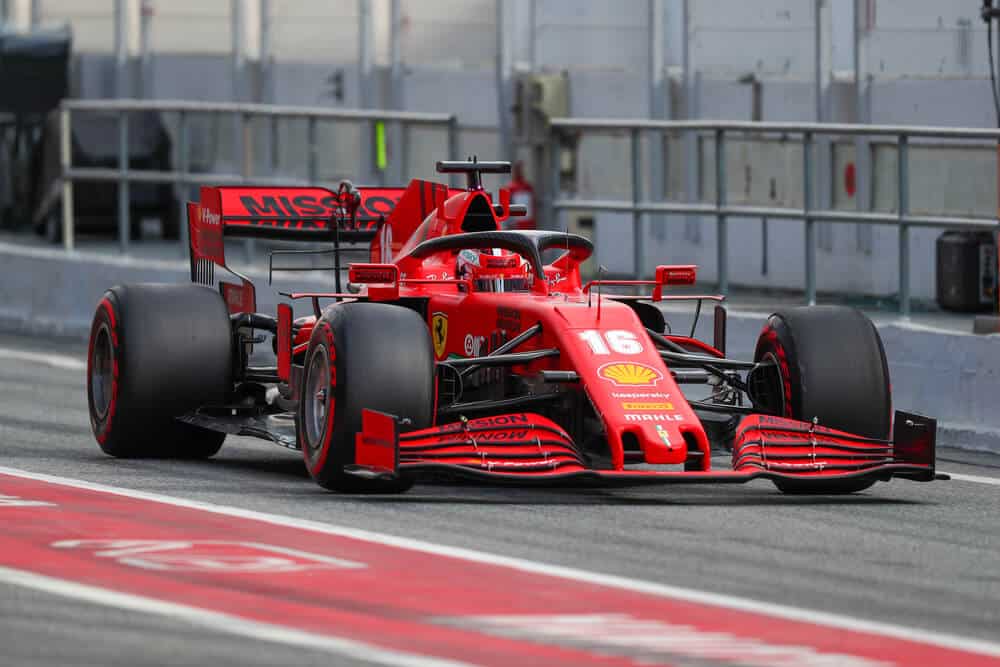If you’ve ever watched a Formula 1 race, you may have noticed how the cars seem to hug the track with incredibly tight turns and high speeds. That’s thanks to an essential part of any F1 driver’s car- the grip. Without it, no amount of speed or skill would be able to keep a car on course.
In this article, we’ll take a look at why grip is so important in Formula 1 and what drivers and teams have to do to ensure their cars have the best possible grip.
The grip is paramount in Formula 1 racing. Without it, drivers and teams would have no hope of achieving the speeds needed to succeed in such a competitive sport.
With the proper grip, cars are able to corner at the highest speeds possible while remaining firmly planted on the track. This allows them to take advantage of every inch of the track and compete on a level playing field with their opponents.
Additionally, It’s also essential for safety reasons, as a lack of it can cause cars to spin out and crash into other racers or obstacles. With the right amount of grip, drivers have greater control over their vehicles and are able to take risks without putting themselves in danger.
Factors affecting grip in F1
Now that we know why the grip is so important in Formula 1 let’s take a look at some of the factors that affect it.
Tire Selection
Tire selection is a crucial factor when it comes to grip in F1. The right tires can provide the traction needed to stay firmly on the track and take tight turns at high speeds. Teams have to choose between slick tires for dry conditions and wet weather tires with deep grooves for wet surfaces.
They also need to pick the correct tire compound – softer compounds offer more grip but wear out quickly, whereas harder compounds provide less grip but last longer. Drivers must find a balance between getting a maximum grip and conserving their tires as they race, or they risk losing control and spinning out.
Track Surface and Temperature
The track surface and temperature also have a direct effect on the grip of a Formula 1 car.
A good track surface is essential for providing the highest level of grip. Any bumps, cracks or other imperfections can cause a loss of grip and increase the risk of an accident.
F1 tracks are generally made from smooth asphalt, which provides the best grip and is less likely to cause accidents. These tracks feature a number of curves, corners, and straights. While these features allow drivers to take full advantage of the track’s layout, they also mean that cars are constantly changing direction or braking and accelerating. This can cause a decrease in grip as the tires lose contact with the ground leading to less traction.
In addition to the track surface, track temperature is also essential for grip in F1. The higher the temperature, the more grip a car will have, and vice versa. This is because when temperatures rise, the tires become softer providing greater contact with the track surface. However, if it’s too hot, then this can cause overheating in both the engine and tires.
Aerodynamics
The third factor that affects grip in F1 is aerodynamics. Aerodynamics refers to the study of airflow around a car and how it affects its speed, stability, and grip.
Formula 1 teams use aerodynamic technologies to minimize drag and maximize downforce. Downforce increases the load on the tires which gives them greater contact with the track surface. This increases the grip of the car, and in turn allows it to corner faster.
Teams can use different aerodynamic components such as wings and diffusers to increase downforce, but they must be careful not to add too much, as this can lead to instability.
Suspension Set-up
Another factor that affects grip in F1 is the suspension setup. The suspension system helps to support the weight of the car and absorb shocks from the road surface, as well as control its handling characteristics. It also plays an important role in determining the amount of force that can be transmitted between a tire and the road surface – i.e., the grip it has.
There are various components to a suspension system, such as springs, dampers and anti-roll bars. Stiffer springs help to keep the tire in contact with the road surface, while dampers (or shock absorbers) help to smooth out any bumps in the track and prevent the car from bouncing or oscillating.
Anti-roll bars reduce body roll during cornering, which helps to maintain the tire’s contact patch with the road surface. All of these components working together mean that a Formula 1 car can have maximum grip and therefore optimal performance on the track.
Driver technique
Lastly, the driver’s technique also plays an important role in determining the grip of a Formula 1 car. A driver must be able to maintain smooth control over the car and anticipate how it will behave in different situations. This includes managing their steering inputs, throttle inputs, braking, and cornering speeds.
Drivers must also understand the limits of their cars and know when to push them further or back off if necessary. All of these techniques help to keep the car in control and maximize the grip available.

Types of Grip in F1
Now that we’ve looked at the factors that affect grip in F1, we can take a look at the different types of grip available.
Mechanical grip
Mechanical grip is the grip between a car’s tires and the track pavement that is provided entirely by its suspension and tires, which is particularly important on slower-speed tracks such as Monaco or Hungary.
This grip is affected by the design of the suspension, the quality of the tires, and the weight distribution of the car, allowing it to have better acceleration, braking, and cornering.
Aerodynamic grip
The aerodynamic grip is the grip between a car’s tires and the track that is provided by downforce generated by its wings and diffusers. This type of grip is especially important for cornering and increases with speed.
It is affected by the shape of the wings, diffuser and underbody as well as the car’s overall design. As such, Formula 1 teams spend a lot of time and resources tweaking the aerodynamics of their cars to gain an edge on the track.
Thermal grip
Thermal grip in Formula 1 refers to the level of grip that a car has on the track surface as a result of the temperature of its tires. The optimal tire temperature for maximum grip varies depending on the track conditions, the type of tire, and the specific needs of the car and driver.
Formula 1 teams use various techniques to manage thermal grip, such as heating blankets and tire warmers. By doing so, they can ensure that their cars have the optimum level of grip available to them at all times, allowing them to get the most out of their cars on the track.
Traction grip
Traction grip is an essential component of Formula 1 racing. The more traction a car has, the better it will perform on the track – faster acceleration out of turns and improved control in corners.
To maximize their cars’ traction grip, teams use a variety of techniques such as tire compounds, aerodynamics, suspension setups, and engine mapping that are tuned to optimize performance in different track conditions and weather. Having the right level of traction is key to having a successful race.
How teams optimize grip
Now that we have looked at the various types of grip in Formula 1, we can look at how teams go about optimizing their cars for maximum grip on the track.
Suspension Setup
The suspension setup of a car is one of the most important factors in determining its overall grip. Teams often spend a lot of time and resources fine-tuning their suspension setup to maximize the contact between their tires and the track surface.
By adjusting the stiffness of their shocks, ride height, camber angle, and toe angle, teams can ensure that their cars have optimal levels of grip available to them at all times.
Tire Requirements
The level of grip a car can achieve is also heavily dependent on the type of tires it is running. Formula 1 tires are designed to provide maximum grip, with different compounds available for dry and wet conditions.
Formula 1 teams must choose the right tire compound to ensure that their cars have the best possible performance on the track. Different teams may also choose different tire strategies depending on their car’s setup and the specific demands of a particular race.
Aerodynamic Adjustments
In addition to suspension and tire setup, teams also make various aerodynamic adjustments to their cars in order to maximize the grip available from their wings and diffusers.
This includes adjusting the shape of the wings and diffusers, as well as adding additional devices such as DRS(drag reduction systems). By making these changes, teams can ensure that their cars have the best possible grip available to them on the track.
The role of grip in different race scenarios
Now that we have looked at the different types of grip available in Formula 1 and how teams go about optimizing it, let’s take a look at the role that grip plays in different race scenarios.
Qualifying
The qualifying session in Formula 1 is highly important, as the best starting position can have a huge effect on the outcome of a race. Therefore, it is essential for drivers to push their cars to the limit in order to set the fastest lap time possible.
This requires maximizing grip on the tires, achieved by using softer tire compounds that provide more friction or traction between them and the track surface. Drivers also have to warm up their tires by taking a few laps before the qualifying session, as well as adjusting the tire pressures and suspension settings to get the best out of their car.
Race starts
The grip is incredibly important during race starts in Formula 1. The grip on the tires allows drivers to quickly transfer power from the engine to the track, which affects how quickly they can accelerate off the starting grid.
Additionally, it also determines how much traction they have when accelerating and how well they can handle while cornering. A good grip on a tire will enable drivers to reach higher speeds quicker and corner more effectively. If a driver has the optimum grip on their tires during race starts, it can give them an edge over their competitors and make all the difference in winning or losing a race.
Overtaking
The grip is critical when it comes to overtaking in Formula 1. A good grip on the tires gives a driver the confidence to make decisive and aggressive moves while overtaking another car. This is due to the added stability, grip, and traction that come with having a good tire grip.
Additionally, it enables drivers to brake later into corners and accelerate out of them quicker than their opponents, allowing them to gain an advantage when looking for an overtaking opportunity.
Wet conditions
The grip on the tires is essential for performance in wet conditions during Formula 1 races. Wet conditions provide a different kind of challenge for drivers, as the tires’ grip is reduced due to the presence of water on the track. To cope with wet conditions, Formula 1 drivers must use special tires with a different tread pattern that disperses water more effectively.
This allows them to maintain grip and stability in wet conditions, enabling them to drive faster and safer. In addition, drivers must also adjust their driving style to take into account the reduced grip on the track.
FAQ
Mechanical grip is generated by the tires and suspension of a car, while the aerodynamic grip is created by air passing over the wings and diffusers of a vehicle.
Teams use special tires with different tread patterns to help disperse water more effectively, allowing drivers to maintain grip and stability in wet conditions. In addition, drivers must also adjust their driving style to take into account the reduced grip on the track.
The track surface and temperature have a direct effect on grip in F1 racing. F1 tracks are generally made of smooth materials such as asphalt which give the tires a good surface to grip onto. The track temperature also has an effect on grip, with higher temperatures leading to softer tire compounds being used that provide more friction between them and the track surface.
Conclusion
The grip is an essential part of Formula 1 racing as it affects performance in a variety of ways. Having the right grip on the tires can make all the difference between setting a fast lap time, winning or losing a race, and overtaking another car.
Teams must take into consideration the track surface, temperature, and wet conditions when managing their tire grip. With proper preparation and management of their tire grip, Formula 1 drivers can have the confidence to get the best out of their cars.
Sources
https://www.torque.com.sg/features/grip-is-it-just-down-to-your-tyres/
https://www.reddit.com/r/formula1/comments/9fop36/whats_the_difference_between_mechanical_grip_and/
https://onestopracing.com/this-is-why-formula-1-tires-have-no-treads/




